
But that’s not the whole story.
Some snake species have wild abilities that let them scale trees, walls, and even tall buildings like it’s nothing.
All snakes can climb, but some are much better at it than others.
Climbing helps them hunt, dodge danger, and find safe spots to rest.
Wondering which snakes are the real acrobats?
Well, you’ll find arboreal species from all over the planet. From tropical tree boas to those sneaky rat snakes in your backyard, these reptiles have unique bodies that let them move up and down vertical surfaces.
Snake Species That Are Excellent Climbers
The following 10 snake species are all masters at climbing. They spend much of their time in the trees.
Looking for a climbing snake to keep as a pet? This article lists the arboreal snakes that make the best pets. Not all do, the first one below being a good example of a snake that is not a good pet for beginners.
1. Amazon Tree Boa
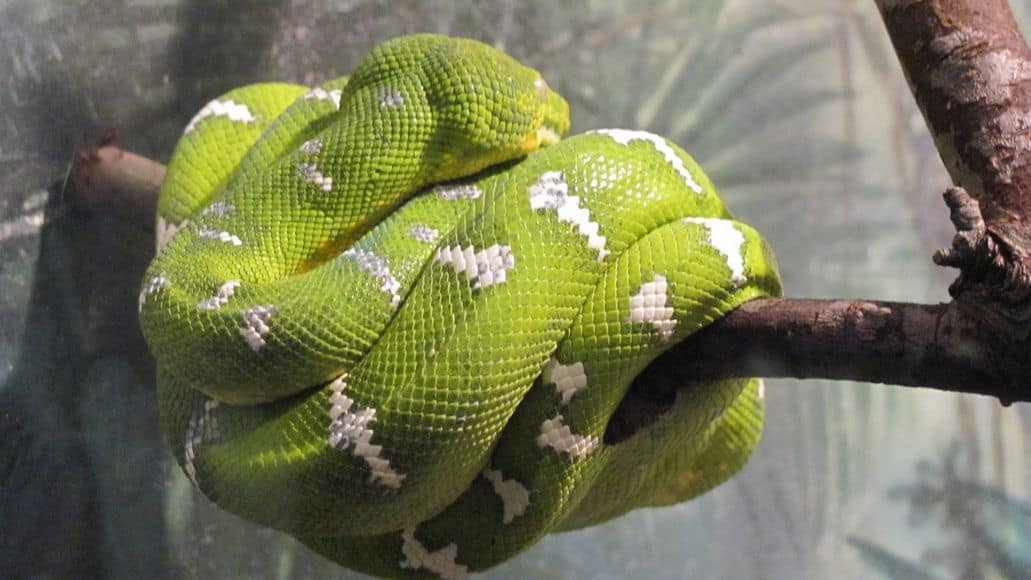
The Amazon Tree Boa might just be the ultimate climber. You’ll spot this snake almost always wrapped around branches in the South American rainforests. Its tail acts almost like a fifth limb, gripping branches tightly as it weaves through the trees. Not many snakes can match its climbing style.
Amazon Tree Boas come in a wild mix of colors and patterns. No two look quite the same—some are yellow, orange, red, green, or brown, all with their own markings.
They hunt by waiting on branches, using heat sensors to spot birds and small mammals even in pitch darkness.
Just a heads up, Amazon Tree Boas can be pretty feisty. They’ll strike fast if they feel threatened, so they’re best left to experienced keepers. Instead of laying eggs, these snakes give birth to live young, which gives their babies a better shot at surviving in the rainforest.
2. Chilean Green Racer
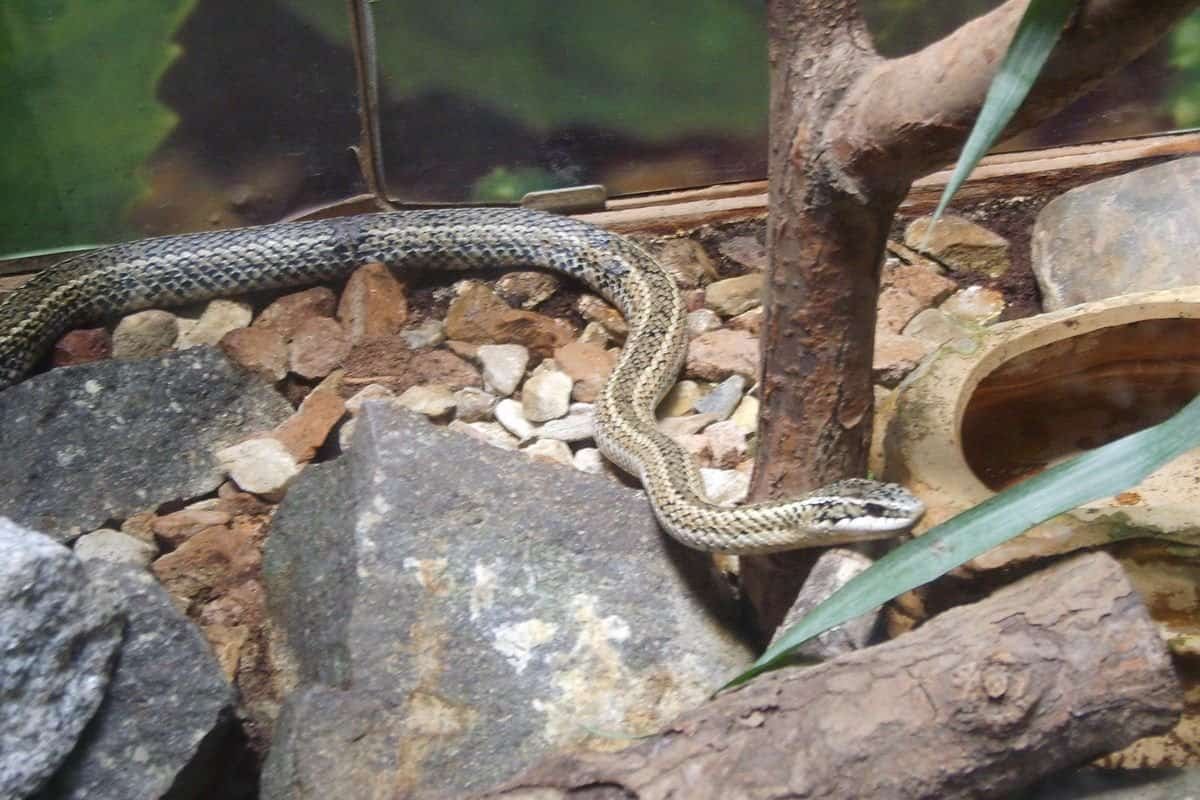
You’ll come across the Chilean Green Racer all over Chile—it’s one of the country’s most common snakes. It can stretch up to 220 centimeters long and sports rear fangs.
These racers are fast and agile climbers. Sometimes you’ll see them basking on branches or darting through the underbrush. They have a knack for sneaking into houses and buildings, using their climbing skills to hunt for birds and lizards up in the trees.
They’re easy to spot thanks to their green color and long, whip-like bodies. They are part of the Colubridae family, and they’re moderately venomous. This species pops up in all sorts of places—forests, grasslands, even cities.
Their name comes from German botanist Adelbert von Chamisso. With rear fangs at the back of their mouth, they’re considered opisthoglyphous snakes. If you’re in Chile and see a snake up a tree, odds are it’s this one.
3. Western Rat Snake
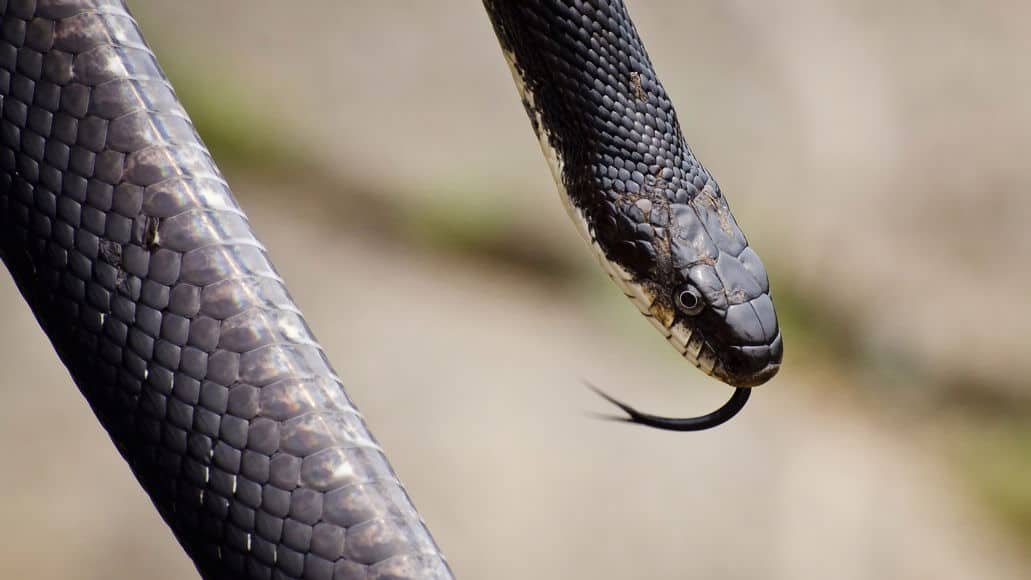
The Western rat snake roams all over central North America. People call it black rat snake or pilot black snake too. These snakes are impressive climbers. You can watch them scale tall tree trunks, sometimes without any branches to help.
They love wooded spots with plenty of trees, often climbing walls or trunks while searching for bird nests. They’re also solid swimmers and tend to be active during the day, usually keeping to themselves.
When it gets cold, they hunker down in dens with other snakes, sometimes with copperheads or timber rattlesnakes.
Thanks to their climbing, they show up in neighborhoods with lots of trees. It’s always a surprise to spot such a big snake in the suburbs, but they are actually a common snake to find in your backyard. They use those climbing skills to reach food high up, spending a lot of time off the ground hunting and exploring.
4. Corn Snake
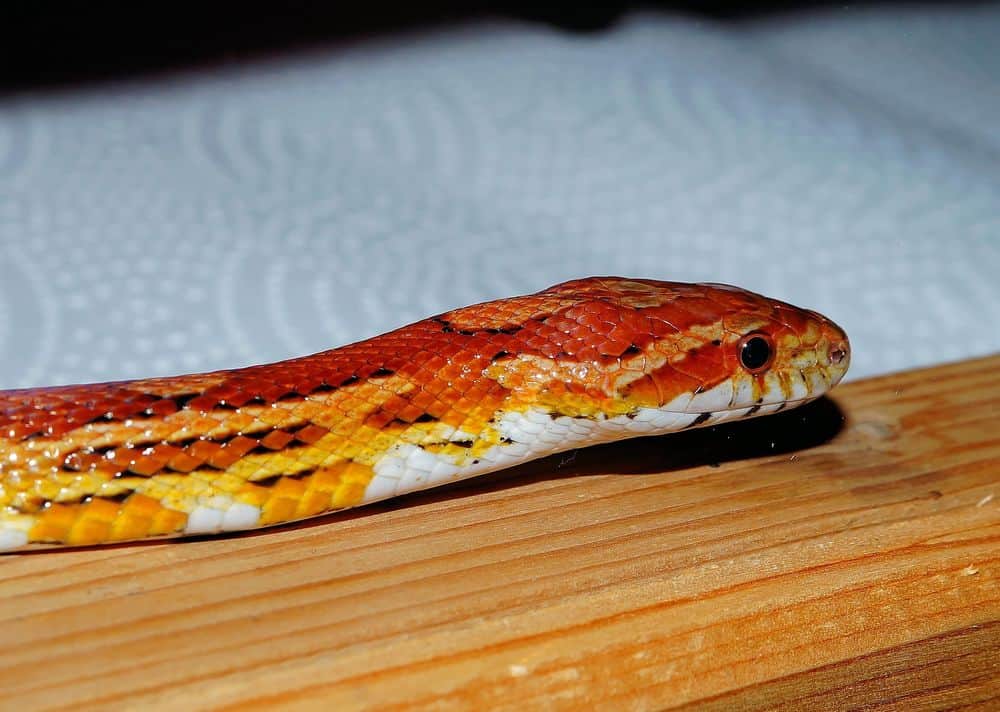
Corn snakes are fantastic climbers and seem to love vertical adventures. In the wild, they can scale trees up to 15 feet high—pretty impressive for such a common pet snake. With strong muscles and grippy scales, they handle trees and walls with ease.
Wild corn snakes often climb trees, bushes, and shrubs in search of food or shelter. They’re after small birds, rodents, and lizards hiding up high. Even pet corn snakes enjoy a good climb if you give them the chance. Some are more into it than others—snakes have personalities too, you know.
They’re partly arboreal, splitting their time between the ground and the trees. That’s a bit different from snakes that never leave the ground. Climbing helps them stay safe from predators and find good resting spots. If you keep one as a pet, toss in some branches or climbing toys—they’ll thank you for it.
5. Brown Tree Snake
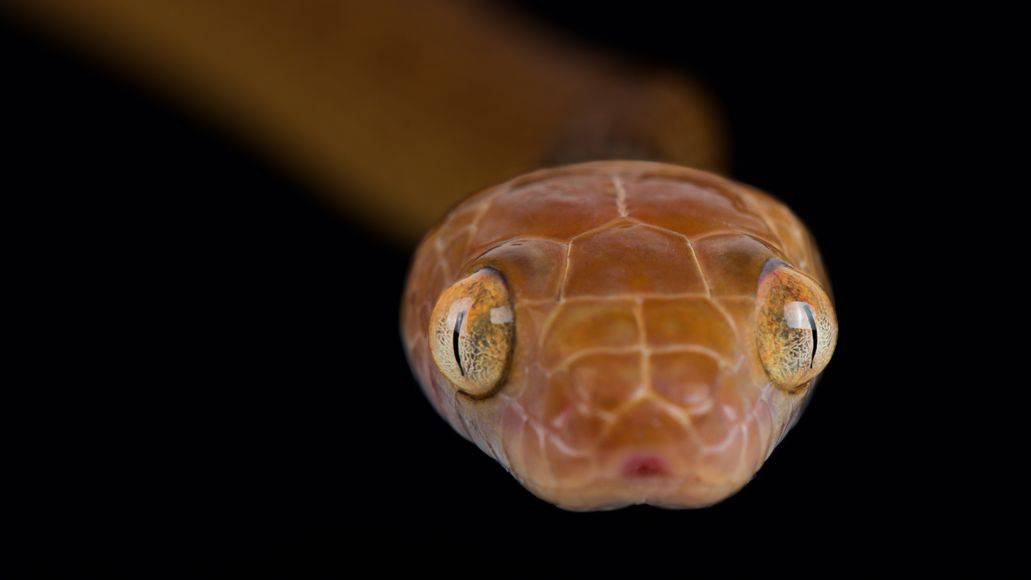
The brown tree snake is in a league of its own when it comes to climbing. These guys can lift three-quarters of their body off the ground while hanging on with just the rest. Even their scientific name, Boiga irregularis, hints at their climbing skills.
They use strong muscles and a flexible tail to grab onto surfaces, making trees, buildings, and even power lines fair game. You’ll notice their unique S-shaped climbing motion. They can even descend head-first using the same trick.
They’ve got a light brown color with darker patches, and their long, slim bodies are built for squeezing through branches and tight spots. They’re mildly venomous—not a threat to humans—but those rear fangs help them snag birds and lizards up in the trees where they spend most of their time.
6. Rainbow Boa
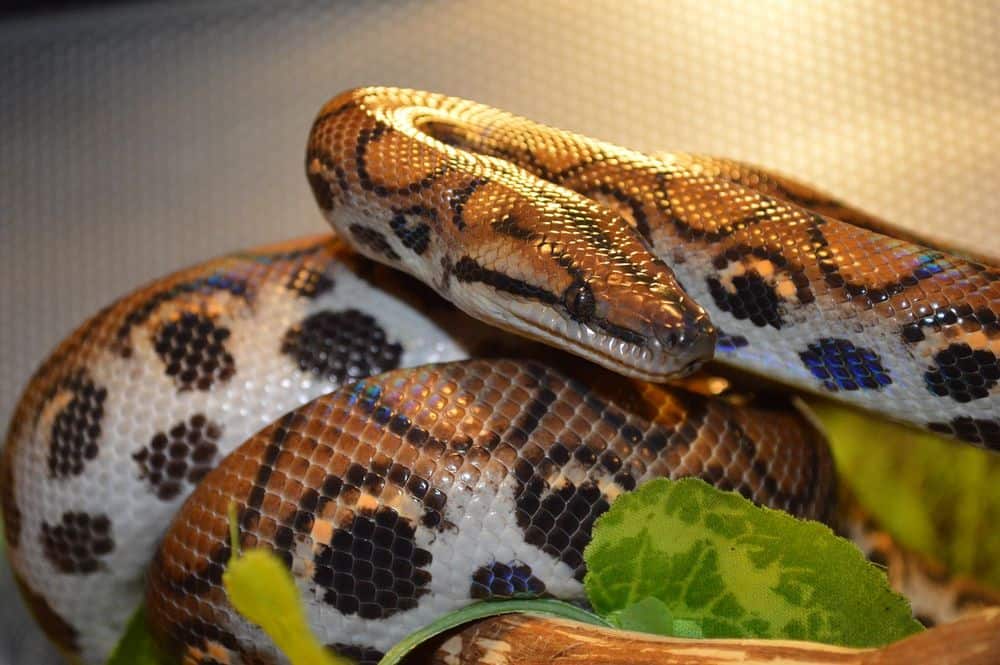
Rainbow boas are easily some of the most gorgeous climbing snakes out there. They live in the rainforests of Central and South America. They’re semi-arboreal, splitting time between the ground and the treetops. You might catch them moving back and forth between both worlds.
Sunlight brings out a rainbow shine on their scales—usually orange, brown, or reddish-brown with black markings and rings. Rainbow boas climb well thanks to strong, muscular bodies. They wrap tightly around branches and trunks as they move through the canopy.
They prefer humid areas like rainforests and woodlands, where the moisture keeps their skin in good shape while they climb. Give them branches in captivity, and they’ll climb all over, enjoying different levels to explore and lounge on.
7. Green Tree Python
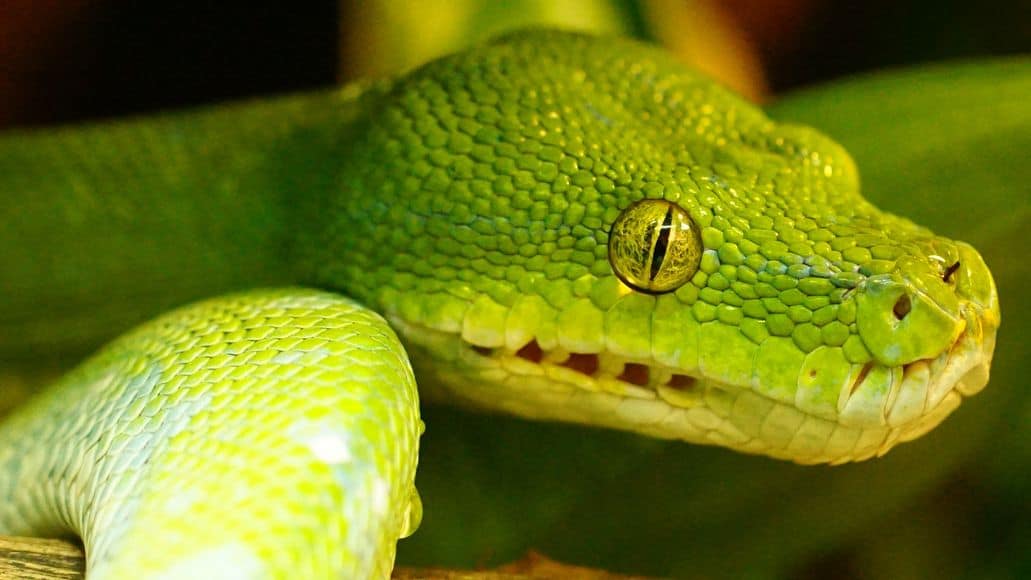
You’ll find green tree pythons in the rainforests of Australia and New Guinea. These snakes are expert climbers, spending most of their lives high above the ground. They use strong muscles and a prehensile tail to grip tree bark and hold onto branches.
Young ones stick closer to the ground, usually within 10 meters, but adults climb much higher. Some have been spotted 25 meters up, which is pretty wild. They rest by looping themselves over branches, waiting for prey to wander by. It’s a great ambush strategy.
They’re easy to recognize: bright green with triangular heads, and they can get impressively big as adults. These snakes hunt birds and small mammals from their tree perches. Their climbing ability makes them lethal ambush predators way up in the canopy.
8. Boomslang
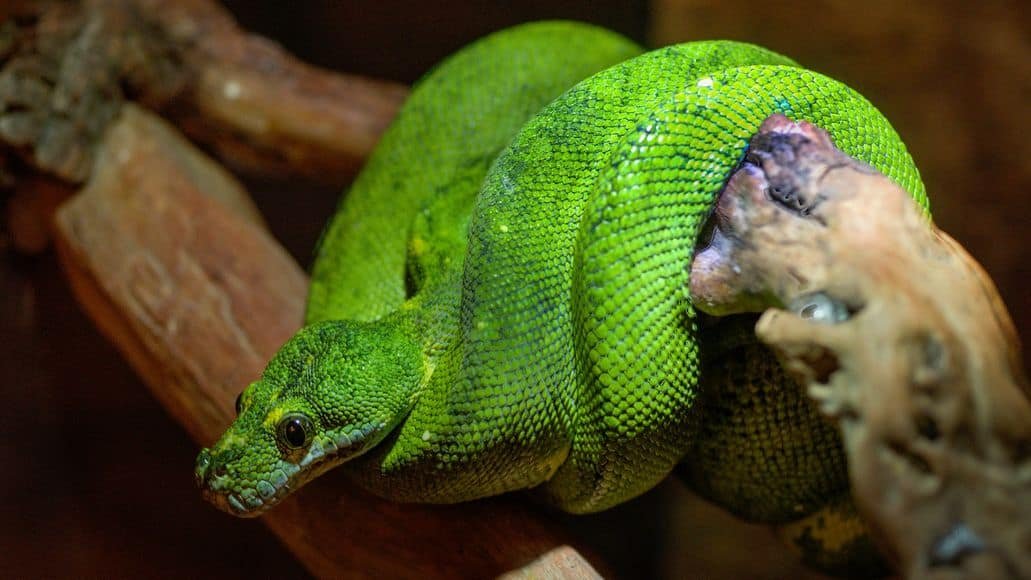
The boomslang is one of Africa’s top tree climbers. These green snakes move through branches with surprising speed and grace. They spend most of their time high in the trees—their name literally means “tree snake” in Afrikaans, which says it all.
Spotting one is easy: look for big eyes and an egg-shaped head. Males are usually bright green, while females stick to brown or olive tones. With slender bodies, they glide from branch to branch, hunting birds and lizards.
Boomslangs live across sub-Saharan Africa in forests, woodlands, and savannas, though you’ll find them on the ground every so often. They’re daytime hunters with sharp eyesight to pick out prey from a distance.
If you ever cross paths with a boomslang, give it space. They’re highly venomous, even if they’d rather hide than fight.
9. Malayan Pit Viper
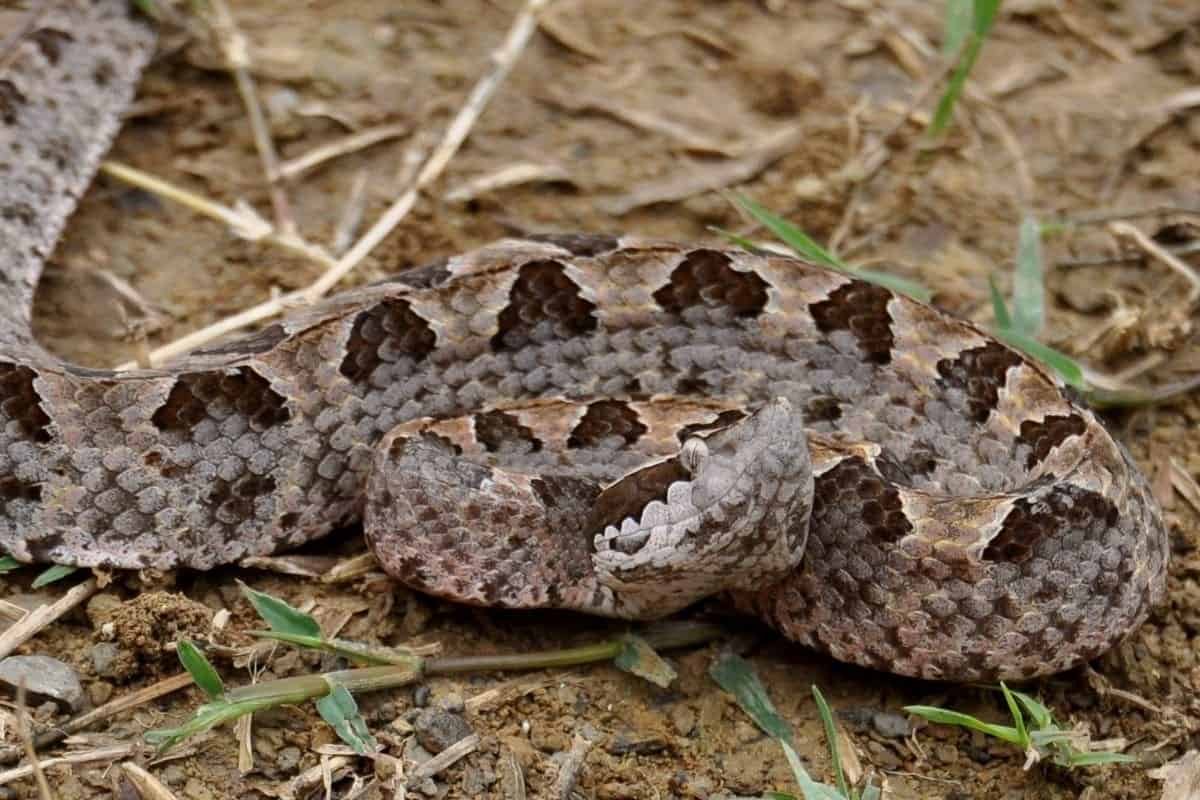
The Malayan Pit Viper is a standout climber in Southeast Asia. They live in trees and move through branches with impressive skill. You’ll find them in places like Thailand and Malaysia, usually up in the forest canopy hunting for food.
Strong muscles and a prehensile tail let them grip branches tightly, almost like having an extra hand. They’re masters at staying still, waiting on branches for birds, small mammals, or lizards to come close before they strike.
Be careful around these guys.Their venom can cause serious pain and swelling if they bite.
Malayan Pit Vipers can grow over three feet long, and their green coloring helps them disappear among the leaves and branches. They’re more active at night, using heat sensors to track warm-blooded prey in total darkness as they move through the trees.
10. Mangrove Snake

The mangrove snake is a real tree-dweller, spending most of its time up in the branches. You’ll see them hanging above rivers and streams in Southeast Asian forests.
With glossy black skin and bold yellow stripes, these snakes can reach up to 10 feet long, using their powerful bodies to grip tree limbs. During the day, they’re pretty chill—just resting in the trees. But when night falls, they turn into active hunters.
They’re great swimmers too, living near water and moving easily between rivers and treetops. Climbing helps them nab birds and small animals up high.
Mangrove snakes have rear fangs and mild venom. They’re not a real threat to humans but will bite if messed with. The venom helps them subdue prey.
It’s easy to confuse them with other black snakes, but those yellow stripes are a giveaway. There are nine different types of mangrove snakes across Southeast Asia. Their strong grip and flexible bodies make them perfect for life in the trees.
Understanding Arboreal Adaptations
Climbing snakes have special body features and behaviors that let them move through trees. These traits allow them to thrive in forests and other tree-filled places worldwide.
Physical Traits That Enable Snake Climbing
- Body Shape and Size Climbing snakes usually have long, thin bodies that help them weave between branches. Their lightweight build makes it easier to balance on small twigs. You’ll notice these snakes look slimmer than ground-dwelling ones. That shape gives them better balance in the trees.
- Specialized Tails A lot of tree snakes have prehensile tails that act almost like hands. These tails wrap around branches for extra grip and support. The tail works as an anchor when the snake reaches for the next branch—especially handy for bigger climbers.
- Scale Adaptations Climbing snakes often have keeled scales on their bellies, which help them grip bark and rough surfaces. These scales act like tiny hooks on tree bark. Some species also have special side scales that help them stick to vertical surfaces, making climbing a whole lot easier.
Common Habitats for Climbing Snakes
- Tropical Rainforests Most climbing snakes hang out in tropical forests packed with thick trees. Places like Thailand, Malaysia, and Singapore are full of these arboreal species. These forests stay warm all year and have loads of prey up in the branches. The tangled canopy gives snakes cover and plenty of hunting spots.
- Temperate Forests Some climbing snakes go for cooler forests, too. They deal with seasons, which definitely changes how and when they move around. Deciduous forests with a mix of trees let climbing snakes explore different heights. They’ll slither from the undergrowth all the way up to the treetops.
- Agricultural Areas Quite a few climbing snakes have no problem adapting to farmland and rural spots with scattered trees. Farmers sometimes even like having these snakes around since they help keep rodents in check. They hunt both up in the trees and down on the ground—pretty handy for pest control, honestly.
Benefits Of Climbing Behavior
Climbing gives snakes a real edge when it comes to finding food and dodging danger. With these skills, they can nab prey that ground snakes just can’t reach and slip away from sticky situations.
Hunting And Foraging Advantages
If you’ve ever watched a climbing snake hunt, you’ll notice they reach food most other snakes don’t even get close to. Tree-dwelling snakes can go after birds, eggs, and small mammals up in the branches.
Some climbing snakes, like rat snakes, sneak up trees at night to catch sleeping birds. Birds think they’re safe, but these snakes can silently move in and grab them while they’re dozing.
Arboreal snakes also target:
- Bird eggs in nests
- Tree frogs and lizards
- Flying squirrels and other small mammals
- Insects living in bark
Climbing lets snakes hunt in all directions, not just along the ground. That means less bumping into other predators after the same meal. Some species get creative and hang from branches to ambush prey passing underneath. It’s a wild sight if you ever catch it.
Protection From Predators
Climbing is a lifesaver when snakes need to escape ground predators that can’t follow them up trees or walls. If you spot a snake racing up a tree, it’s probably dodging something hungry.
Common predators snakes avoid by climbing:
- Large mammals like foxes and coyotes
- Ground birds such as roadrunners
- Other snakes that aren’t great climbers
Trees and higher spots offer better hiding places. Thick branches and leaves help them blend in, even from people. Many climbing snakes nap in trees during the day, staying out of sight from daytime predators while they rest.
Young snakes especially need these climbing skills. They face more threats than adults, so getting off the ground fast can really make the difference.
Excellent Climbing Snakes: Conclusion
It turns out, snakes are surprisingly skilled climbers. They rely on powerful muscles and unique belly scales to grip everything from tree trunks to brick walls.
Key climbing features include:
- More than 10,000 muscles packed into their bodies
- Belly scales that help them grip surfaces
- Bodies flexible enough to wrap around branches
- Some even have prehensile tails for extra hold
Tree-dwelling snakes, especially, have really nailed the art of vertical movement. They can slither up smooth bark, scale rough walls, and balance on the thinnest of branches—sometimes it almost seems effortless.
Why do they climb? Well, some are after food, others just want to avoid danger, and a few are simply looking for a cozy spot to rest. Quite a few snakes actually spend most of their lives hanging out in trees.
Remember these facts:
- Not every snake can climb well
- Climbing skills depend on the species
- Things like body weight and muscle structure play a role
- Some can tackle both trees and walls without much trouble
So, if you spot a snake curled up in a tree, don’t freak out. For many species, that’s just everyday life—they fit right in up there with the birds and squirrels.
Honestly, their climbing abilities say a lot about how well snakes have adapted. Whether they’re on the ground or way up in the canopy, they always seem to find a way to make it work.
Leave a Reply